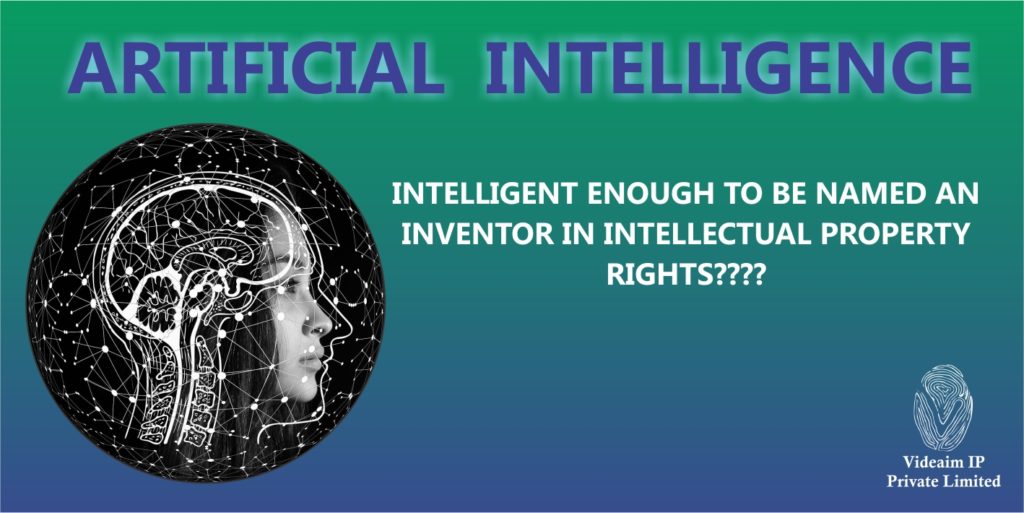
The fathers of the field, Minsky and McCarthy, in 1950s described artificial intelligence as any task performed by a program or a machine that, if a human carried out the same activity, we would say the human had to apply intelligence to accomplish the task.
Artificial intelligence (AI) a legal inventor?
In this blog we look at the outcome of a prominent case in USPTO, wherein, AI was named inventor and applicant; and try to understand how USPTO interpreted the law. Red Dead Redemption Free Download Further, the blog explores what happens if similar scenario arises in India, and more importantly find out if Patent Act 1970 is rightly equipped to deal with it. Recently, an application was made in USPTO, entitled “Devices and Methods for Attracting Enhanced Attention”, (16/524,350) wherein an artificial system DABUS was identified as a legal inventor and the applicant. Decisions were made on following listed statutes-
- 35 U.S.C. § 100(f) provides:The term “inventor” means the individual or, if a joint invention, the individuals collectively who invented or discovered the subject matter of the invention.
- 35 U.S.C. § 100(g) provides:The terms “joint inventor” and “co-inventor” mean any 1 of the individuals who invented or discovered the subject matter of a joint invention.
- 35 U.S.C. § 101 provides:Whoever invents or discovers any new and useful process, machine, manufacture, or composition of matter, or any new and useful improvement thereof, may obtain a patent therefor, subject to the conditions and requirements of this title.
- 35 U.S.C. § 115(a) provides:An application for patent that is filed under section 111 (a) or commences the national stage under section 371 shall include, or be amended to include, the name of the inventor for any invention claimed in the application. Except as otherwise provided in this section, each individual who is the inventor or a joint inventor of a claimed invention in an application for patent shall execute an oath or declaration in connection with the application
- 35 U.S.C. § 115(b) provides, in pertinent part:An oath or declaration under subsection (a) shall contain statements that … such individual believes himself or herself to be the original inventor or an original joint inventor of a claimed invention in the application.
- 35 U.S.C. § 115(h)(l) provides, in pertinent part:Any person making a statement required under this section may withdraw, replace, or otherwise correct the statement at any time. USPTO based its decision on the patent statues, the Federal Circuit case law concerning inventorship, and USPTO regulations and specified that under current law, only natural persons may be named as an inventor in a patent application, hence denied introducing Artificial intelligence (AI) as a legal inventor. (Reference https://www.bbc.com/news/technology-52474250)
Exploring Indian Stand
Let us explore the Indian stand by analysing the definitions and interpretations of “patentee and person” and persons entitled to apply for patent according to the Patent Act 1970. The Patent Rules 2003 also defines“Person other than a natural person”.
Patent Act 1970 – Definitions and interpretation
- “patentee” means the person for the time being entered on the register as the grantee or proprietor of the patent;
- “person” includes the Government; (t) “person interested” includes a person engaged in, or in promoting, research in the same field as that to which the invention relates;
Persons entitled to apply for patents
Subject to the provisions contained in section 134, an application for a patent for an invention may be made by any of the following persons, that is to say,
- by any person claiming to be the true and first inventor of the invention;
- by any person being the assignee of the person claiming to be the true and first inventor in respect of the right to make such an application;
- by the legal representative of any deceased person who immediately before his death was entitled to make such an application. (2) An application under sub-section (1) may be made by any of the persons referred to therein either alone or jointly with any other person.
Patent Rules 2003
Definitions – In these rules, unless the context otherwise requires,— (da) “Person other than a natural person” shall include a “small entity”
Discussion
Hence, referring to the Indian Patent Act 1970 and The Patent Rules 2003, a wider ambit has been provided to a person, and includes “natural person” and “other than natural person”; further, other than natural person comprises of large entity and small entity. As of now there is no clarification on Artificial Intelligence as an applicant and/or inventor in the Indian jurisdiction. However, if we interpret the definition of person according to the act and rules, an Artificial Intelligence is nothing but a virtual person/intelligence, and both the act and rules have not included such person. So it is clear that even in Indian jurisdiction a virtual person/intelligence may not be an inventor or applicant.
